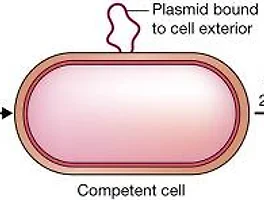Date
2011. 5. 3
Subject
to learn about the growth of bacteria and compare the effect of each antibiotics
Abstract
Most of microorganisms, including bacteria, grow according to growth phase generally. Growth phase includes four stages:
1. Lag phase: There is no increase of cell number, but expressions of gene related to adaptation occur.
2. Log phase (exponential phase): The cells undergo cell division rapidly. It keeps if the nutrient concentration is high and the waste concentration is low.
3. Stationary phase: It nutrients are exhausted and the waste concentration is high, the growth rate is zero.
4. Death phase: Bacteria run out of nutrients and die. The population of cells decrease rapidly.
An antibiotic is a compound or substance that kills or slows down the growth of bacteria. Actually, it includes anti-fungal and etc., but normally be used to mention antibacterial. Ampicillin, chloramphenicol, kanamycin, tetracyclin and PBC are typical antibiotics.
To compare the effect of antibiotics, we can use a clear zone. The clear zone is the area that microorganisms cannot live. First, make small discs absorbing each antibiotic. Second, spread the bacteria in the medium equally. Thirdly, put the discs on the medium with distances and incubate it. Then there are clear zone around the disc if the antibiotic is active to the bacteria. We call this method as disc assay, and we can compare the effect of each antibiotics by comparing the diameters of each clear zone.
Procedure
1. Prepare the bacterial lawn.
2. Divide the plate into 5 sections label the names of 5 antibiotics.
3. Turn on the alcohol lamp.
4. Remove the lid and place the antibiotic disks on the 5 sections.
5. Replace the lid and seal the plate with Parafilm.
6. Incubate the dishes at 37℃ for 24-48h and then refrigerate them.
7. Examine cultures to determine bacterial sensitivity to antibiotics. Measure the diameter of the zone of inhibition.
8. Record each antibiotic number and record the size of inhibition zone in the table.
Results
1. Using your result, complete the table. Record the size or the zone of inhibition for all antibiotics.
| Ampicillin | Chloramphenicol | Kanamycin | Tetracyclin | PBS |
Diameter(nm) | 10.0 | 14.1 | 15.8 | 12.4 | - |
Relative sensitivity | + | +++ | ++++ | ++ | - |
2. Use the following arbitrary to rank relative bacterial sensitivity to antibiotics.
According to the result, the bacterial sensitivity is decreasing in this order: kanamycin, chloramphenicol, tetracyclin, ampicillin and PBS.
Discussion
1. Were any antibiotics which bacteria were very sensitive to?
According to the result, the diameter of clear zone of kanamycin is the biggest in the five agents. Therefore, kanamycin is very sensitive to bacteria relatively.
2. What is each antibiotics' function?
Ampicillin: It acts as a competitive inhibitor of the transpeptidase which is concerned about making cell wall of bacteria.
Chloramphenicol: It prevents the protein synthesis by inhibiting peptidyl transferase not to make peptide bonds.
Kanamycin: It interacts with the 30s subunit of ribosomes then leads mistranslation.
Tetracyclin: It inhibits protein synthesis by blocking attachment of charged aminoacyl-tRNA.
3. Explain superbacteria. (About positive effect and side effect of antibiotics)
In the past, many people had died by pathogenic bacteria. However, by discovering many antibiotics, lots of disease it not incurable illness anymore. However, superbacteria are the side effect of the antibiotics. Superbacteria have tolerance to most of antibiotics, so it is really hard to cure. To treat the superbacteria, doctors use cocktail therapy which uses more than three kinds of medicine at once. If it fails, superbacteria can get another tolerance and it becomes more difficult to treat.
도움이 되었다는 댓글은 큰 힘이 됩니다 +_+





